Brachytherapy Cost in South Korea from top hospitals starts from KRW 22825730 (USD 17000)approx
.Brachytherapy is a procedure of placing radioactive material inside the body of the patient to treat any sort of cancer. This process is often called internal radiation. Brachytherapy enables doctors to convey higher portions of radiation to progressively explicit regions of the body, contrasted and the regular type of radiation treatment (outer shaft radiation) that ventures radiation from a machine outside of your body.
Brachytherapy may cause fewer reactions than does outer pillar radiation, and the general treatment time is typically shorter with brachytherapy.
Brachytherapy is used to treat several types of cancer, including:
Bile duct cancer
Brain cancer
Breast cancer
Cervical cancer
Endometrial cancer
Esophageal cancer
Eye cancer
Head and neck cancers
Lung cancer
Pancreatic cancer
Prostate cancer
Rectal cancer
Skin cancer
Soft tissue cancers
Vaginal cancer
A portion of the symptoms of brachytherapy is like those seen with outside pillar radiation treatment, in spite of the fact that they are typically less extreme.
Instances of intense or prompt symptoms include:
Nearby swelling
Nearby wounding
Release in instances of vaginal or womb cancer.
Semen might be stained and, in uncommon cases, may contain ousted pellets. Patients are in this manner encouraged to utilize contraception during sex.
Bleeding
Pain and discomfort at the site of the implant
The general sentiment of weariness
Brachytherapy utilized for uterine, cervical, vaginal or prostate disease can prompt momentary urinary manifestations including urinary maintenance, torment on pee, incontinence, and failure to pee. Brachytherapy for these tumors can likewise prompt looseness of the bowels, stoppage and some rectal dying.
There can be varied factors that affect the costing of the procedure and many time external circumstances play an important role. The exact factors are:
State of the art technology
Brachytherapy isotope used
Individual spending capacity
Hospital allowances
Treatment cost
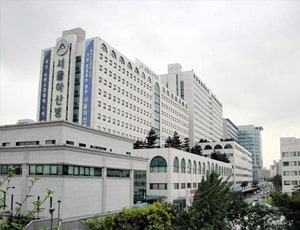
Asan Medical Centre located in Seoul, South Korea is accredited by ISO. Also listed below are some of the most prominent infrastructural details:

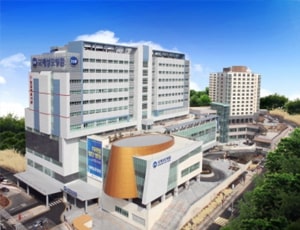
International St. Mary's Hospital located in Seoul, South Korea is accredited by JCI. Also listed below are some of the most prominent infrastructural details:
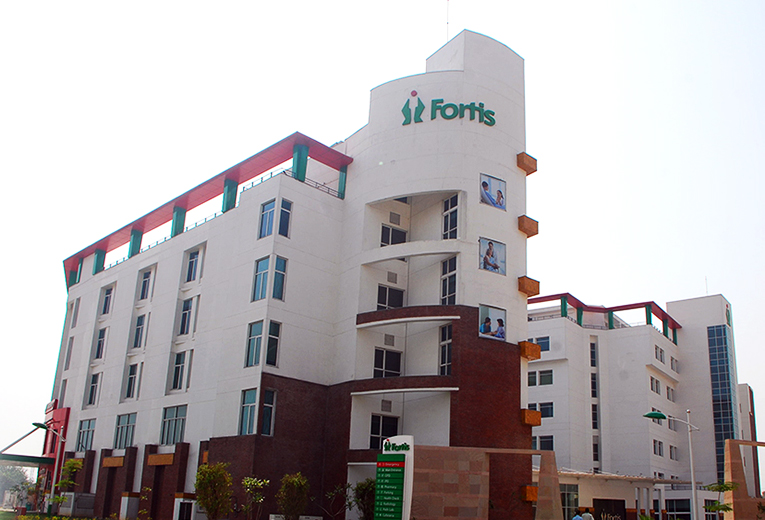
Fortis Hospital, Shalimar Bagh is a super-speciality hospital which occupies a unique place when it comes to providing world class patient care. The hospital is equipped with 262 beds and is expanded over a total area of 7.34 acres. It provides the highest quality of medical care via its team of doctors, technicians, nurses, and management professionals.
Infrastructure & facilities:
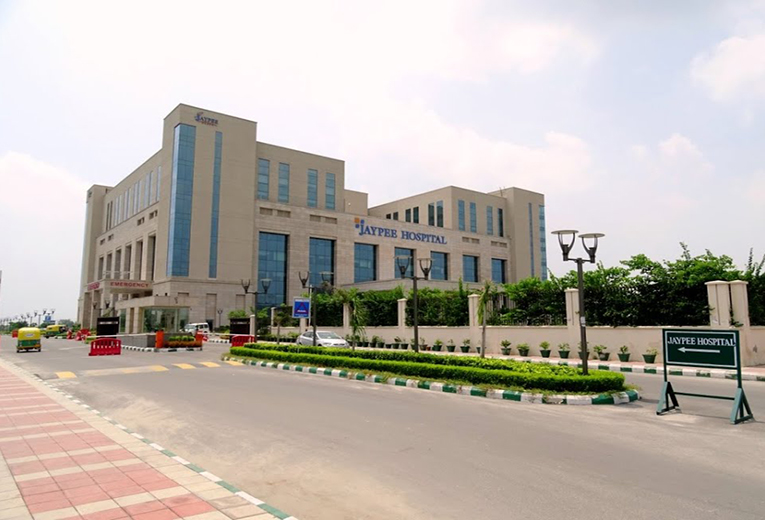
Jaypee Hospital located in Noida, India is accredited by ISO, NABH, NABL. Also listed below are some of the most prominent infrastructural details:
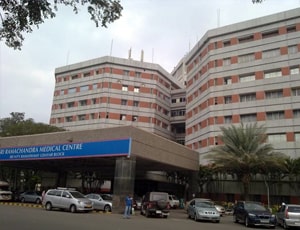
Types of Brachytherapy in Sri Ramachandra Medical Centre and its associated cost
| Treatment Option | Approximate Cost Range (USD) | Approximate Cost Range (INR) |
|---|---|---|
| Brachytherapy (Overall) | 2022 - 6098 | 167201 - 501367 |
| High-Dose Rate (HDR) | 2023 - 5066 | 166332 - 417066 |
| Low-Dose Rate (LDR) | 3037 - 7115 | 249107 - 584141 |
| Permanent Seed Implants | 4058 - 8159 | 332122 - 664669 |
| Temporary Implants | 3036 - 6110 | 249251 - 499800 |
| Interstitial Brachytherapy | 4072 - 7106 | 334362 - 585106 |
| Intracavitary Brachytherapy | 2538 - 5570 | 208169 - 459817 |
| Prostate Brachytherapy | 5067 - 10157 | 417415 - 834530 |
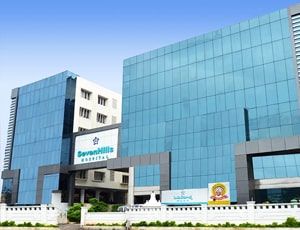
Types of Brachytherapy in Seven Hills Hospital and its associated cost
| Treatment Option | Approximate Cost Range (USD) | Approximate Cost Range (INR) |
|---|---|---|
| Brachytherapy (Overall) | 2211 - 6896 | 182328 - 552599 |
| High-Dose Rate (HDR) | 2279 - 5592 | 183200 - 469564 |
| Low-Dose Rate (LDR) | 3345 - 7915 | 275247 - 642969 |
| Permanent Seed Implants | 4564 - 8874 | 369555 - 723637 |
| Temporary Implants | 3437 - 6646 | 280792 - 543572 |
| Interstitial Brachytherapy | 4587 - 7742 | 366374 - 654184 |
| Intracavitary Brachytherapy | 2754 - 6241 | 232627 - 508063 |
| Prostate Brachytherapy | 5519 - 11060 | 452827 - 911867 |
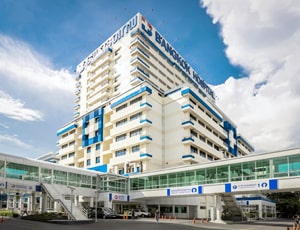
Types of Brachytherapy in Bangkok Hospital and its associated cost
| Treatment Option | Approximate Cost Range (USD) | Approximate Cost Range (THB) |
|---|---|---|
| Brachytherapy (Overall) | 6834 - 13457 | 237545 - 482343 |
| High-Dose Rate (HDR) | 6088 - 11416 | 216196 - 404491 |
| Low-Dose Rate (LDR) | 7281 - 12178 | 256138 - 441654 |
| Permanent Seed Implants | 8545 - 14417 | 305348 - 528839 |
| Temporary Implants | 7199 - 12127 | 263543 - 448074 |
| Interstitial Brachytherapy | 7792 - 10701 | 283641 - 389205 |
| Intracavitary Brachytherapy | 6646 - 10182 | 236653 - 353577 |
| Prostate Brachytherapy | 10917 - 17616 | 382447 - 637439 |
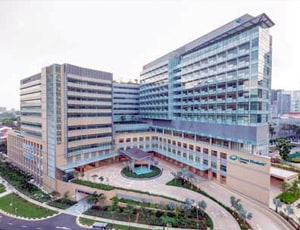
Mount Elizabeth Novena Hospital located in Novena, Singapore is accredited by JCI. Also listed below are some of the most prominent infrastructural details:
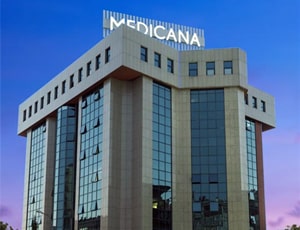
Types of Brachytherapy in Medicana Camlica Hospital and its associated cost
| Treatment Option | Approximate Cost Range (USD) | Approximate Cost Range (TRY) |
|---|---|---|
| Brachytherapy (Overall) | 5596 - 11115 | 167745 - 346545 |
| High-Dose Rate (HDR) | 4995 - 8955 | 151531 - 267566 |
| Low-Dose Rate (LDR) | 6123 - 9925 | 190344 - 302516 |
| Permanent Seed Implants | 7262 - 12252 | 224200 - 370467 |
| Temporary Implants | 6219 - 10295 | 187150 - 303215 |
| Interstitial Brachytherapy | 6664 - 9601 | 206119 - 293397 |
| Intracavitary Brachytherapy | 5602 - 8337 | 171084 - 252022 |
| Prostate Brachytherapy | 8910 - 16067 | 265784 - 468800 |
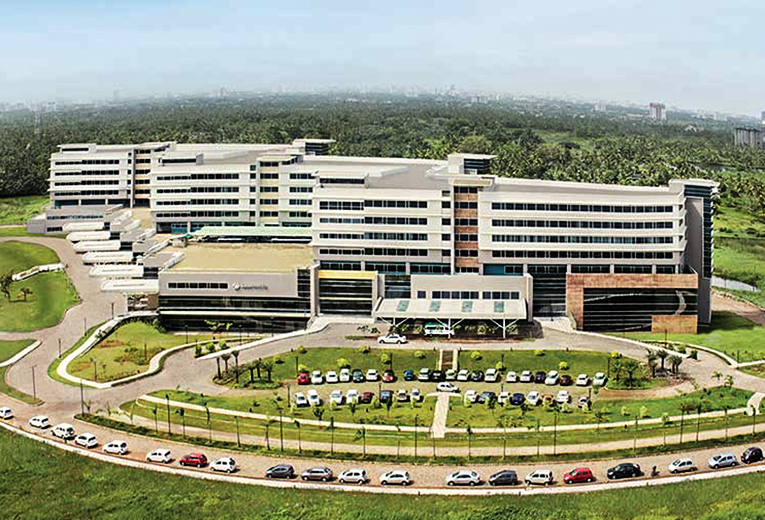
Types of Brachytherapy in Aster Medcity and its associated cost
| Treatment Option | Approximate Cost Range (USD) | Approximate Cost Range (INR) |
|---|---|---|
| Brachytherapy (Overall) | 2025 - 6104 | 166955 - 499329 |
| High-Dose Rate (HDR) | 2028 - 5099 | 166831 - 414826 |
| Low-Dose Rate (LDR) | 3056 - 7116 | 248866 - 584033 |
| Permanent Seed Implants | 4063 - 8120 | 332403 - 668384 |
| Temporary Implants | 3040 - 6068 | 249435 - 499344 |
| Interstitial Brachytherapy | 4079 - 7121 | 333885 - 582813 |
| Intracavitary Brachytherapy | 2526 - 5609 | 208586 - 458282 |
| Prostate Brachytherapy | 5066 - 10137 | 415599 - 830787 |
Types of Brachytherapy in Pushpawati Singhania Research Institute and its associated cost
| Treatment Option | Approximate Cost Range (USD) | Approximate Cost Range (INR) |
|---|---|---|
| Brachytherapy (Overall) | 2036 - 6114 | 166790 - 497478 |
| High-Dose Rate (HDR) | 2023 - 5058 | 165923 - 417982 |
| Low-Dose Rate (LDR) | 3049 - 7071 | 250736 - 581699 |
| Permanent Seed Implants | 4065 - 8137 | 333452 - 662691 |
| Temporary Implants | 3042 - 6119 | 248573 - 499900 |
| Interstitial Brachytherapy | 4058 - 7073 | 333929 - 585208 |
| Intracavitary Brachytherapy | 2547 - 5595 | 208178 - 458989 |
| Prostate Brachytherapy | 5098 - 10131 | 415190 - 828874 |
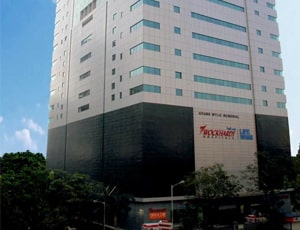
Types of Brachytherapy in Wockhardt Hospital - A New Age Hospital and its associated cost
| Treatment Option | Approximate Cost Range (USD) | Approximate Cost Range (INR) |
|---|---|---|
| Brachytherapy (Overall) | 2022 - 6077 | 166767 - 500728 |
| High-Dose Rate (HDR) | 2026 - 5085 | 166587 - 417883 |
| Low-Dose Rate (LDR) | 3047 - 7107 | 249769 - 584017 |
| Permanent Seed Implants | 4048 - 8133 | 334341 - 665076 |
| Temporary Implants | 3041 - 6086 | 248817 - 500856 |
| Interstitial Brachytherapy | 4063 - 7104 | 334338 - 582682 |
| Intracavitary Brachytherapy | 2534 - 5610 | 208889 - 456734 |
| Prostate Brachytherapy | 5051 - 10148 | 416362 - 834092 |
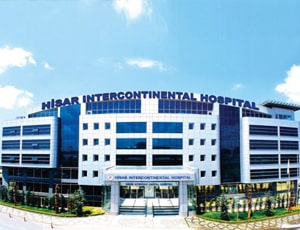
Types of Brachytherapy in Hisar Intercontinental Hospital and its associated cost
| Treatment Option | Approximate Cost Range (USD) | Approximate Cost Range (TRY) |
|---|---|---|
| Brachytherapy (Overall) | 5640 - 11009 | 172832 - 331780 |
| High-Dose Rate (HDR) | 5142 - 9128 | 149232 - 274758 |
| Low-Dose Rate (LDR) | 6274 - 10185 | 185067 - 306582 |
| Permanent Seed Implants | 7475 - 12449 | 223386 - 376958 |
| Temporary Implants | 6073 - 10270 | 184858 - 303481 |
| Interstitial Brachytherapy | 6682 - 9753 | 203857 - 293756 |
| Intracavitary Brachytherapy | 5513 - 8288 | 166099 - 258750 |
| Prostate Brachytherapy | 8995 - 16078 | 271099 - 484009 |
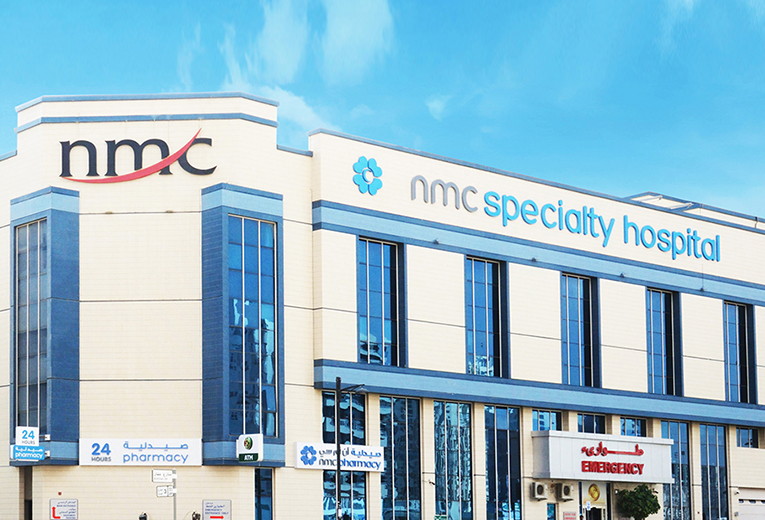
Types of Brachytherapy in NMC Specialty Hospital, Al Nahda and its associated cost
| Treatment Option | Approximate Cost Range (USD) | Approximate Cost Range (AED) |
|---|---|---|
| Brachytherapy (Overall) | 7846 - 15714 | 29003 - 58806 |
| High-Dose Rate (HDR) | 7372 - 13206 | 26796 - 48625 |
| Low-Dose Rate (LDR) | 8253 - 14528 | 31299 - 53998 |
| Permanent Seed Implants | 9485 - 16955 | 34567 - 62394 |
| Temporary Implants | 8439 - 14515 | 31608 - 54259 |
| Interstitial Brachytherapy | 9013 - 12206 | 33455 - 45835 |
| Intracavitary Brachytherapy | 7951 - 11285 | 29512 - 40717 |
| Prostate Brachytherapy | 12462 - 20004 | 46138 - 73068 |

Types of Brachytherapy in NMC Specialty Hospital and its associated cost
| Treatment Option | Approximate Cost Range (USD) | Approximate Cost Range (AED) |
|---|---|---|
| Brachytherapy (Overall) | 7803 - 15434 | 29004 - 58002 |
| High-Dose Rate (HDR) | 7421 - 13702 | 26245 - 48497 |
| Low-Dose Rate (LDR) | 8316 - 14333 | 30878 - 54610 |
| Permanent Seed Implants | 9487 - 17078 | 34976 - 63174 |
| Temporary Implants | 8596 - 14585 | 30455 - 54669 |
| Interstitial Brachytherapy | 8980 - 12159 | 32538 - 46083 |
| Intracavitary Brachytherapy | 7794 - 11218 | 29539 - 40851 |
| Prostate Brachytherapy | 12397 - 20283 | 46346 - 75118 |
Brachytherapy is an advanced form of radiation therapy. It is also known as internal radiation therapy. Radiation therapy is a type of cancer treatment in which ionizing radiation is used to destroy cancer cells and shrink the size of the tumors. The conventional form of radiation therapy is external beam radiation that projects radiation from a machine outside of the body. In case of internal radiation or brachytherapy, radioactive particles or sources that are internally placed in or next to the tumour site, are used to destroy cancer cells. Brachytherapy helps deliver a high radiation dose to the tumor, with minimal exposure to the surrounding healthy tissues.It thus allows delivering high doses of radiation to more-specific areas of the body.
Brachytherapy can be used for effective treatment of cervical, prostate, breast, skin, lung, head and neck, and gum cancer, in addition to tumors located in other parts of the body. Brachytherapy for prostate cancer is a commonly performed procedure. It is also used for the treatment of gum cancer as well. Brachytherapy is an alternative treatment for gum cancer and is conducted who are unfit to undergo a surgery or do not need one.
Brachytherapy can be completed in less time than other conventional radiotherapy techniques. Brachytherapy for prostate cancer and other cancers is often performed on an outpatient basis and patients typically have to take fewer brachytherapy sessions, as compared to external radiotherapy treatment for cancer. This makes brachytherapy more accessible and convenient to many patients. Most of the patients are able to tolerate brachytherapy very well with fewer side effects.
There are two types of brachytherapy treatment:
Brachytherapy treatment plan is created and governed by a radiation oncologist, who is a highly trained physician specializing in treating cancer with radiotherapy. The radiation oncologist will require a team, including a medical physicist, dosimetrist, radiation therapist, radiation therapy nurse and in some cases, a surgeon to conduct the procedure. However, the radiation oncologist is the one who evaluates the patient and determines the appropriate therapy, including how much radiation to deliver.
In permanent brachytherapy, needles that are pre-filled with the radioactive brachytherapy seeds are inserted into the tumor. Then the needle or device is removed, leaving the radioactive seeds behind. Sometimes these seeds may be implanted in sessions using a device that inserts them individually at regular intervals. An appropriate imaging means such as an ultrasound, X-ray, MRI or CT scan may be used to assist the physician in positioning brachytherapy seeds at the right place. After implantation, some additional imaging can be done to verify seed placement.
Temporary brachytherapy starts with placing a delivery device, such as a catheter, needle, or applicator, into the tumor. Methods of imaging such as an ultrasound, MRI, or CT scan will help position the radiation sources correctly. The delivery device can either be inserted into a body cavity such as vagina (intracavitary brachytherapy) or applicators such as needles or catheters can be inserted into body tissues (interstitial brachytherapy). Device implantation will depend on the location of cancer.
Radiation using brachytherapy procedure can be delivered at three different levels:
For patients who have received brachytherapy for prostate cancer or any other types of cancer, limiting physical activity for at least three to five days is important. You can experience some level of grogginess after the procedure, however, it will last for only a few hours. You will be prescribed a few emergency medicines that you can take in case you experience pain or any other type of discomfort.
There are some side effects associated with all kinds of radiation therapy. However, the acute, sub-acute, or long-term side effects of brachytherapy depend on the location of the tumor being treated and the type of brachytherapy being used.
Some acute side effects of brachytherapy are
But these are temporary side effects and usually resolve within a few days following completion of treatment.
Usually, brachytherapy does not cause any long-term side effects, but in a few cases, it may cause urinary and digestive problems. But in that case as well, long-term side effects are usually mild or moderate in nature and there are many palliative medicines that are available to cope with the symptoms.
Ask your healthcare adviser for the best multiple options and choose the one that meets your expectations
Brachytherapy cost in South Korea varies from one hospital to the other. The top hospitals for Brachytherapy in South Korea covers all the expenses related to the pre-surgery investigations of the candidate. Typically, the package cost of Brachytherapy in South Korea includes the expenses related to the surgeon's fee, anesthesia, hospital, meals, nursing and ICU stay. A prolonged hospital stay due to delayed recovery, new diagnosis and complications after surgery may increase the cost of Brachytherapy in South Korea.
There are many hospitals across the country that offer Brachytherapy to international patients. The top hospitals for Brachytherapy in South Korea include the following:
After Brachytherapy in South Korea, the patient is supposed to stay in guest house for another 21 days. During this time, the patient undergoes medical tests and consultations. this is to ensure that the treatment was successful and the patient us safe to return.
Apart from the Brachytherapy cost, the patient may have to pay for additional daily expenses such as for guest house after discharge and meals. These charges starts from USD 50 per person.
Some of the best cities in South Korea which offer Brachytherapy are:
The patient has to spend about 1 days in the hospital after Brachytherapy for proper recovery and to get clearance for discharge. During the recovery, the patient is carefully monitored and control tests are performed to see that everything is okay. If required, physiotherapy sessions are also planned during recovery in hospital.
There are more than 2 hospitals that offer Brachytherapy in South Korea. These hospitals have propoer infrastructure as well as offer good quality of services when it comes to Brachytherapy These hospitals comply with all the rules and regulations as dictated by the regulatory bodies and medical association in South Korea
Some of the best medical specialists for Brachytherapy in South Korea are: